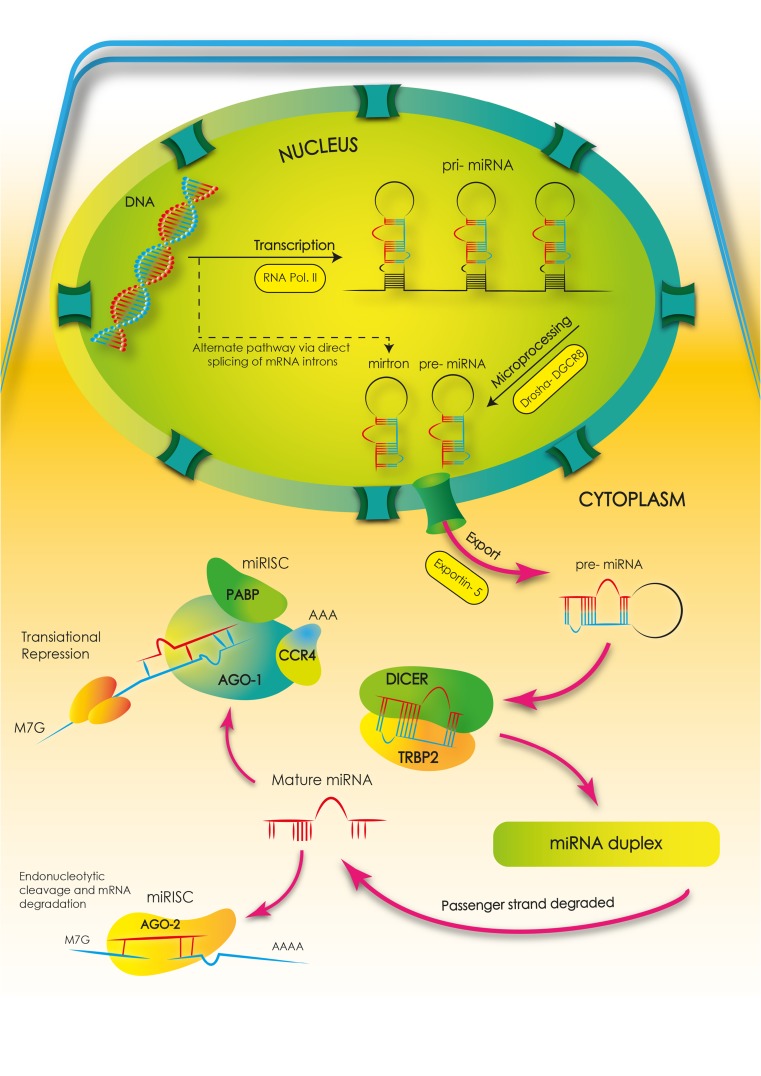Fig. 1.
MicroRNA biogenesis. The first stage of biogenesis of microRNA is the transcription of miRNA genes performed in the nucleus with the participation of RNA polymerase II. This process results in the creation of pri-miRNAs. At the next stage, the pri-miRNAs are cleaved into precursor miRNAs (pre-miRNAs). This happens with the participation of the Drosha enzyme in association with the DGCR8 protein (DiGeorge syndrome Critical Region 8). This complex creates pre-miRNA. There is also an alternative pathway by the direct splicing of mRNA introns, bypassing the Drosha processing. The pre-miRNA molecules formed in this way are called mirtrons. Both these types of molecules (pre-miRNAs and mirtrons) are actively transported to the cytoplasm by Exportin-5. In the cytoplasm, the next stage of the maturation of pre-miRNA takes place. At this stage, the Dicer enzyme together with TRBP2 (transactivating response RNA-binding protein) creates the double-stranded miRNA duplexes. Each of these duplexes has a functional miRNA leading strand and a passenger strand. Next, the duplex is unwound, and the passenger strand is degraded. From this moment, the leading strand, as a mature miRNA, can enter the miRISC (miRNA-induced silencing complex) by connecting with Argonaute proteins. Other abbreviations: PABP poly A binding protein, CCR4 C-C chemokine receptor type 4, AGO-1 Argonaute protein 1, AGO-2 Argonaute protein 2

